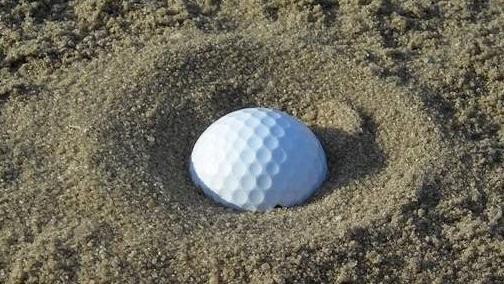Golfers seeking to master one of the game’s most challenging short-game shots often find themselves facing the dreaded “fried egg” bunker lie. Characterized by a ball nestled deeply in soft sand, this tricky situation tests both skill and composure. In this article, we break down the essential techniques and strategies needed to execute a successful “fried egg” bunker shot, helping players improve their confidence and lower their scores on the greenside sand traps.
Mastering the Stance and Club Selection for Effective Fried Egg Shots
Successfully maneuvering out of a ‘fried egg’ bunker-where the ball sits buried in soft sand-starts with adopting a solid, confident stance. Position your feet slightly wider than shoulder-width apart to maintain balance on the often unstable bunker surface. Dig your feet in lightly to create a stable base, and open your stance by aiming your body slightly left of the target for right-handed golfers. This alignment encourages a higher, softer shot trajectory, essential for clearing the lip of the bunker without overshooting. Keep your weight distributed evenly, favoring the front foot just slightly to promote crisp contact with the sand rather than the ball directly.
Choosing the right club is equally critical in these challenging lies. A sand wedge is typically the go-to club, thanks to its loft and bounce designed to glide through sand rather than dig in. However, depending on how deeply your ball is embedded, experimenting with a lob wedge or gap wedge can offer better control or added loft. Use this quick reference to guide your selection:
| Lie Depth | Recommended Club | Shot Focus |
|---|---|---|
| Lightly Embedded | Sand Wedge (54°) | Clean sand splash |
| Deeply Buried | Lob Wedge (58°) | Higher trajectory, softer landing |
| Moderate Embed | Gap Wedge (50°) | Controlled distance and height |
- Open the clubface: Helps maximize loft and bounce, making it easier to slide beneath the ball.
- Focus on accelerating through impact: Avoid deceleration to prevent the club from digging too deeply.
- Visualize a splash of sand: Aim to take a shallow sand explosion that carries the ball forward smoothly.
Techniques to Control Spin and Distance from Deep Bunker Lies
Mastering spin and distance control in thick, deep bunker lies is essential to escape the dreaded ‘fried egg’ scenario. Start by positioning the ball slightly forward in your stance and opening your clubface to increase loft, allowing cleaner contact with the sand. Use a more aggressive swing to ensure the clubhead enters the sand behind the ball by approximately 1.5 to 2 inches. This technique generates maximum explosion of sand, which in turn lends the ball the necessary backspin to stop quickly upon landing. Maintaining a smooth acceleration through the shot, rather than decelerating, helps prevent excessive distance loss-a common problem in soft bunker lies.
To dial in precision, consider these key adjustments:
- Club Selection: Favor higher-lofted wedges, such as a lob wedge with 58° or more, for enhanced spin and softer landings.
- Grip Pressure: Maintain light grip pressure to allow a natural release, which promotes better feel and touch around the greens.
- Footwork Stability: Dig your feet slightly into the sand for a solid base, preventing slipping and aiding control over the shot’s trajectory and distance.
| Aspect | Recommended Approach | Impact on Shot |
|---|---|---|
| Ball Position | Forward in stance | Higher trajectory, increased spin |
| Clubface Angle | Open slightly (10°-15°) | Helps lift ball and add backspin |
| Swing Path | Steep, aggressive | Max sand displacement, better distance control |
| Foot Placement | Firmly anchored in sand | Enhanced stability, consistent contact |
In Summary
Mastering the ‘fried egg’ bunker shot can significantly improve a golfer’s short game, turning a challenging lie into an opportunity. By understanding the key techniques-open clubface, precise stance, and confident swing-players can navigate sandy hazards with greater skill and consistency. As with any aspect of golf, practice remains essential. Whether you’re a weekend golfer or a seasoned pro, refining your approach to these tricky shots can shave strokes off your game and enhance your overall performance on the course.








